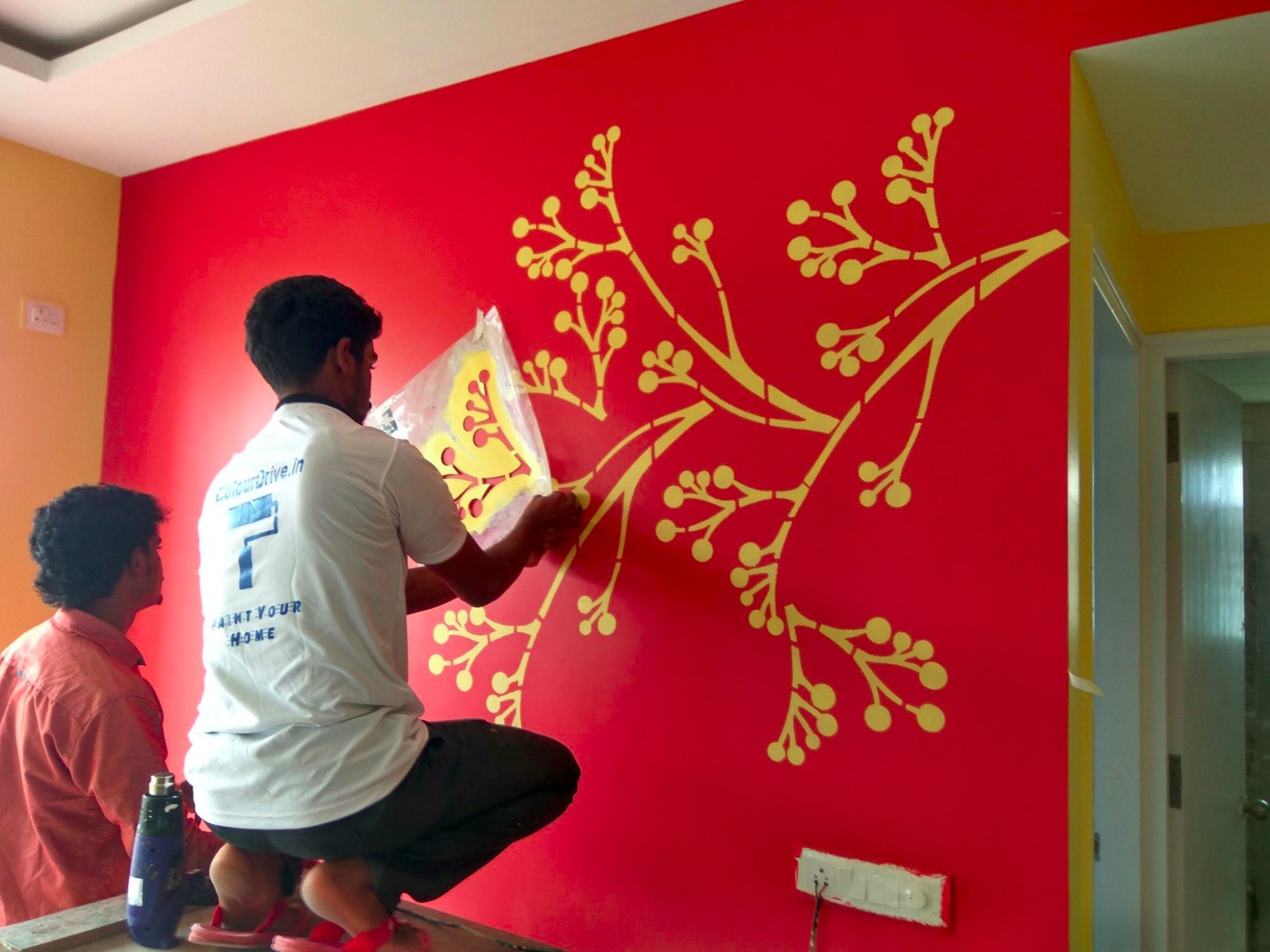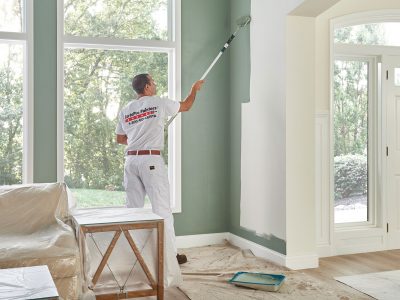Get Professional Lakewood Interior Painting for a Seamless, Beautiful Finish
Get Professional Lakewood Interior Painting for a Seamless, Beautiful Finish
Blog Article
Enhance Your Inside Style With Comprehensive Shade Examination
The integration of shade consultation right into interior style presents an one-of-a-kind possibility to refine and raise the psychological and aesthetic resonance of a space. By involving with an experienced color expert, you can browse the complexities of shade choice, ensuring that your choices not only complement architectural attributes however additionally resonate with individual design and psychological effect. This critical collaboration can significantly influence the total ambience of your setting, cultivating a sense of harmony and objective. Recognizing the subtleties of this procedure is necessary-- what key elements should be taken into consideration to accomplish optimum results?
Benefits of Shade Assessment

Additionally, color consultation aids in making the most of all-natural light and maximizing spatial understanding. Lighter tones can make a space show up more expansive, while darker shades create an intimate setup. Cleveland Metro Painting Specialists. This tactical application of color can dramatically influence the overall atmosphere of any indoor room
Furthermore, specialist specialists have an extensive understanding of current patterns and classic classics, ensuring that the picked colors will remain attractive over time. This insight can save clients from costly redesigns in the future. Ultimately, shade appointment equips customers by providing them with a clear vision and direction, fostering self-confidence in their style options and inevitably bring about an extra successful and satisfying indoor design outcome.
Recognizing Shade Psychology
The significance of color psychology in indoor layout can not be overemphasized, as it looks into the emotional and psychological impacts that various tones can stimulate in individuals. Shades can influence mood, behavior, and also performance, making them an important factor to consider in any style task.
For example, warm colors such as red, orange, and yellow are often related to energy and heat. They can boost sensations of enjoyment and comfort, making them suitable for social spaces like living areas or kitchen areas. Conversely, trendy colors like blue, environment-friendly, and purple have a tendency to evoke calmness and tranquility, making them optimal for bedrooms or reflection areas.
In addition, the use of neutral tones can develop a well balanced setting by permitting the bolder shades to stand out without frustrating the detects. Recognizing these mental effects makes it possible for designers to develop rooms that not only look visually pleasing yet likewise advertise psychological well-being.
Including color psychology right into indoor layout entails a thoughtful choice of hues tailored to the desired feature of each area, eventually enhancing the overall experience for its passengers. This recognition is essential for attaining a unified and useful indoor atmosphere.
The Shade Wheel Discussed
Understanding the relationships in between shades is crucial for reliable interior decoration, and the shade wheel works as a beneficial tool in this process. The shade wheel, developed by Isaac Newton in the 17th century, shows the range of colors arranged in a round format. It consists of primaries-- red, blue, and yellow-- that can not be produced by mixing other shades. Secondary colors, created by integrating primaries, consist of green, orange, and purple. Tertiary shades result from blending a key and a second shade, resulting in hues such as turquoise and red-orange.
The color wheel aids designers grasp the relationships between shades, consisting of complementary, similar, and triadic schemes. Corresponding colors, positioned contrary each various other on the wheel, create vivid contrasts that can invigorate a space. Analogous colors, located next to one another, give a harmonious and natural appearance. Triadic plans make use of three uniformly spaced shades, using balance and visual passion.
Utilizing the color wheel in interior decoration not only improves aesthetic appeal however also stimulates certain emotions and atmospheres, making it a critical reference for color appointment. Understanding these partnerships eventually empowers developers to create rooms that are both visually exciting and click here to read useful.
Selecting the Right Scheme
An appropriate shade click over here now scheme can link a room, improve its functions, and stimulate wanted feelings. Various areas offer diverse functions and call for combinations that show their desired use; for instance, relaxing colors such as soft blues or greens function well in bedrooms, advertising leisure.
Next, take into consideration the natural light readily available. Light can dramatically change how shades appear, so it is necessary to examine the area at different times of the day. Additionally, think about existing architectural components and furnishings. An unified combination should match these features, creating a cohesive look throughout the space.
When selecting colors, utilize the 60-30-10 guideline, which suggests that 60% of the space need to be a dominant color, 30% a second color, and 10% an accent color. This proportion makes sure equilibrium and visual passion (Cleveland Metro Painting Specialists). Sample colors on the wall surfaces prior to devoting, as this allows you to see just how the hues engage with one another and the general atmosphere they produce in your interior style project.
Collaborating With a Color Professional

When dealing with a shade specialist, the process typically starts with a preliminary assessment. During this meeting, you'll review your vision, preferences, and the existing components in your room. The expert will evaluate your demands and may advise certain color palettes that align with your objectives.
After developing an instructions, the expert will provide examples and aesthetic aids to help you visualize the suggested color design. This step is important, as shades can appear in different ways under varying illumination problems.
In addition, a shade specialist can assist you in picking corresponding furnishings, art work, and accessories to harmonize with your selected scheme. By teaming up closely, you can attain a refined aesthetic that raises your interiors and produces a welcoming ambience. Eventually, the proficiency of a shade specialist can substantially enhance the overall impact of your design job.
Conclusion
In recap, comprehensive color assessment offers as an important device for boosting interior style. By leveraging expert expertise of color psychology and spatial dynamics, a tailored shade palette can be developed to evoke specific feelings and develop a harmonious atmosphere.
By engaging with a seasoned shade specialist, read you can navigate the intricacies of shade option, ensuring that your selections not just complement architectural functions but likewise reverberate with individual design and psychological impact. It comprises key shades-- red, blue, and yellow-- that can not be produced by blending various other shades.The color wheel helps developers grasp the partnerships between colors, including complementary, similar, and triadic schemes.When picking shades, make use of the 60-30-10 rule, which suggests that 60% of the room must be a dominant shade, 30% an additional shade, and 10% an accent color. By leveraging professional understanding of color psychology and spatial characteristics, a tailored shade palette can be established to evoke specific emotions and produce an unified setting.
Report this page